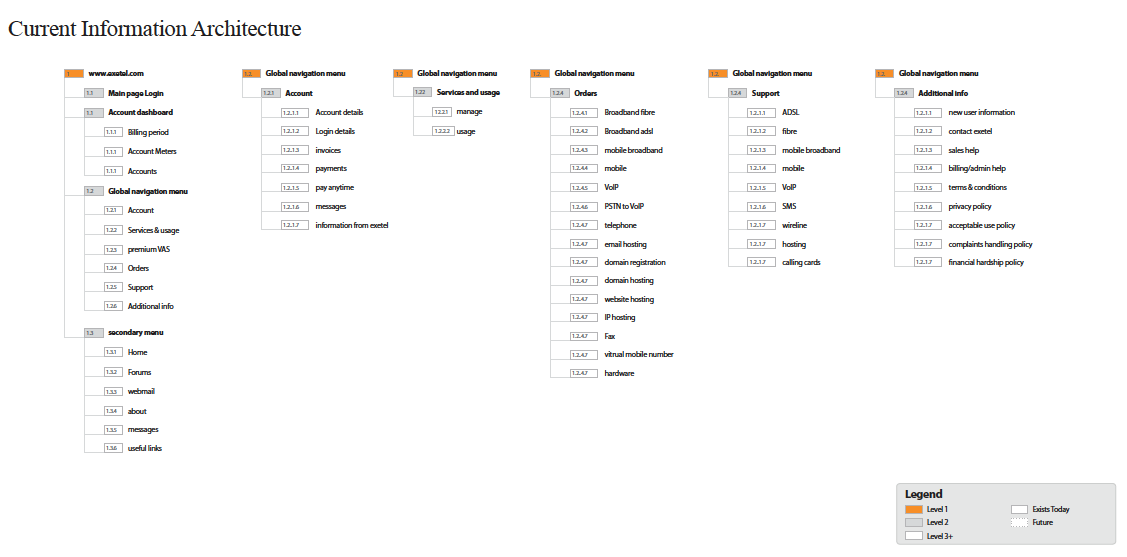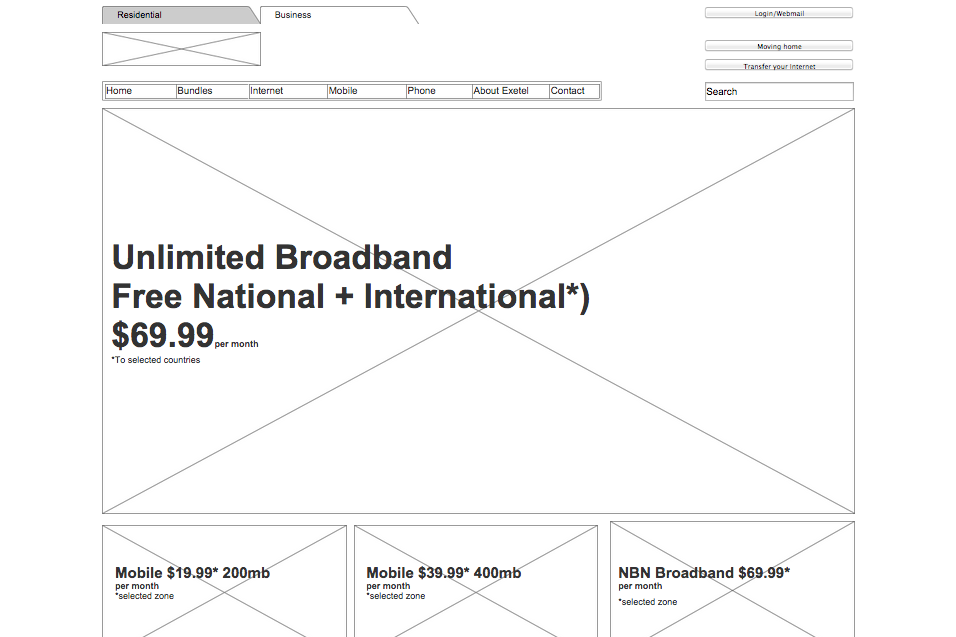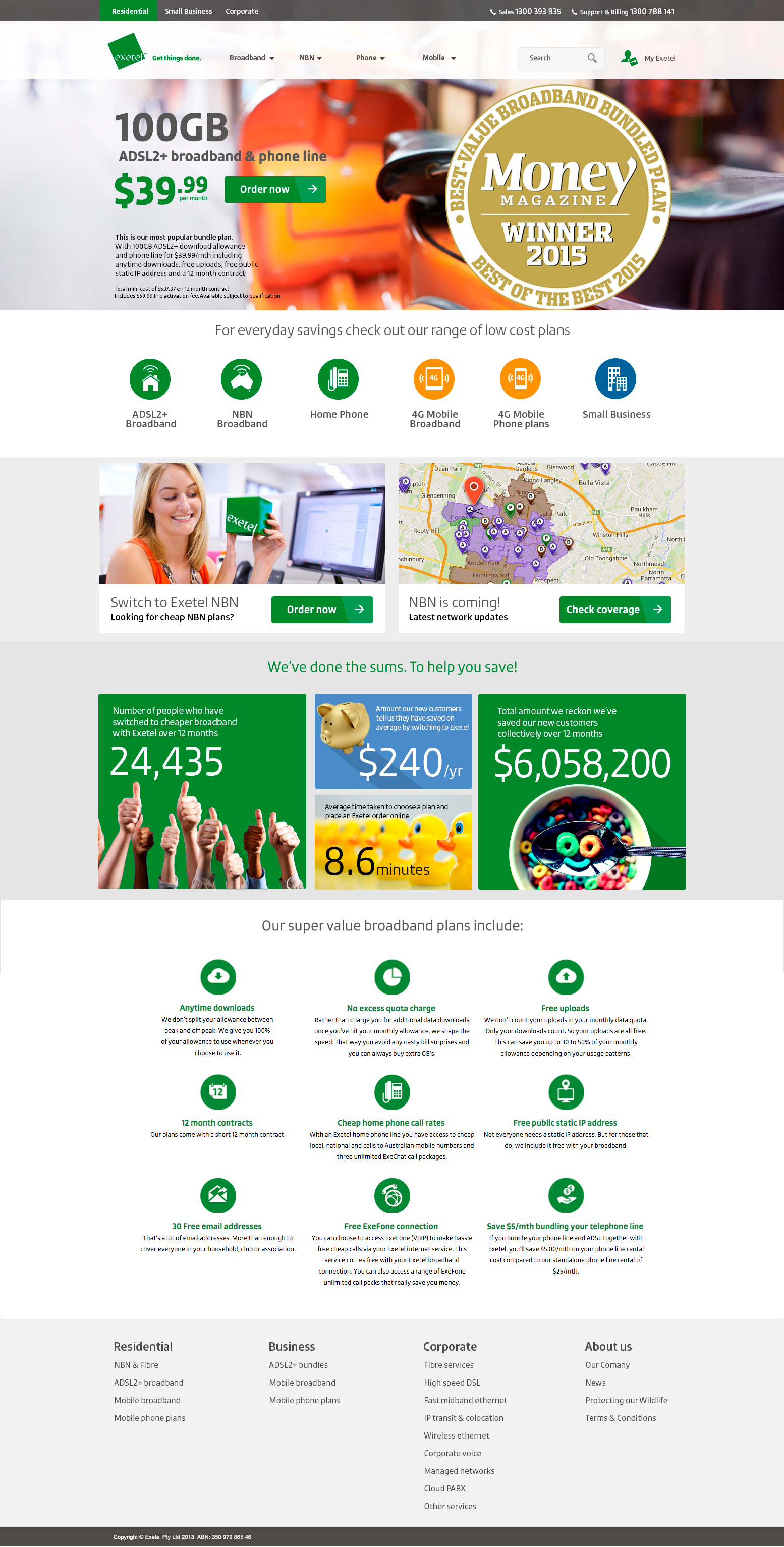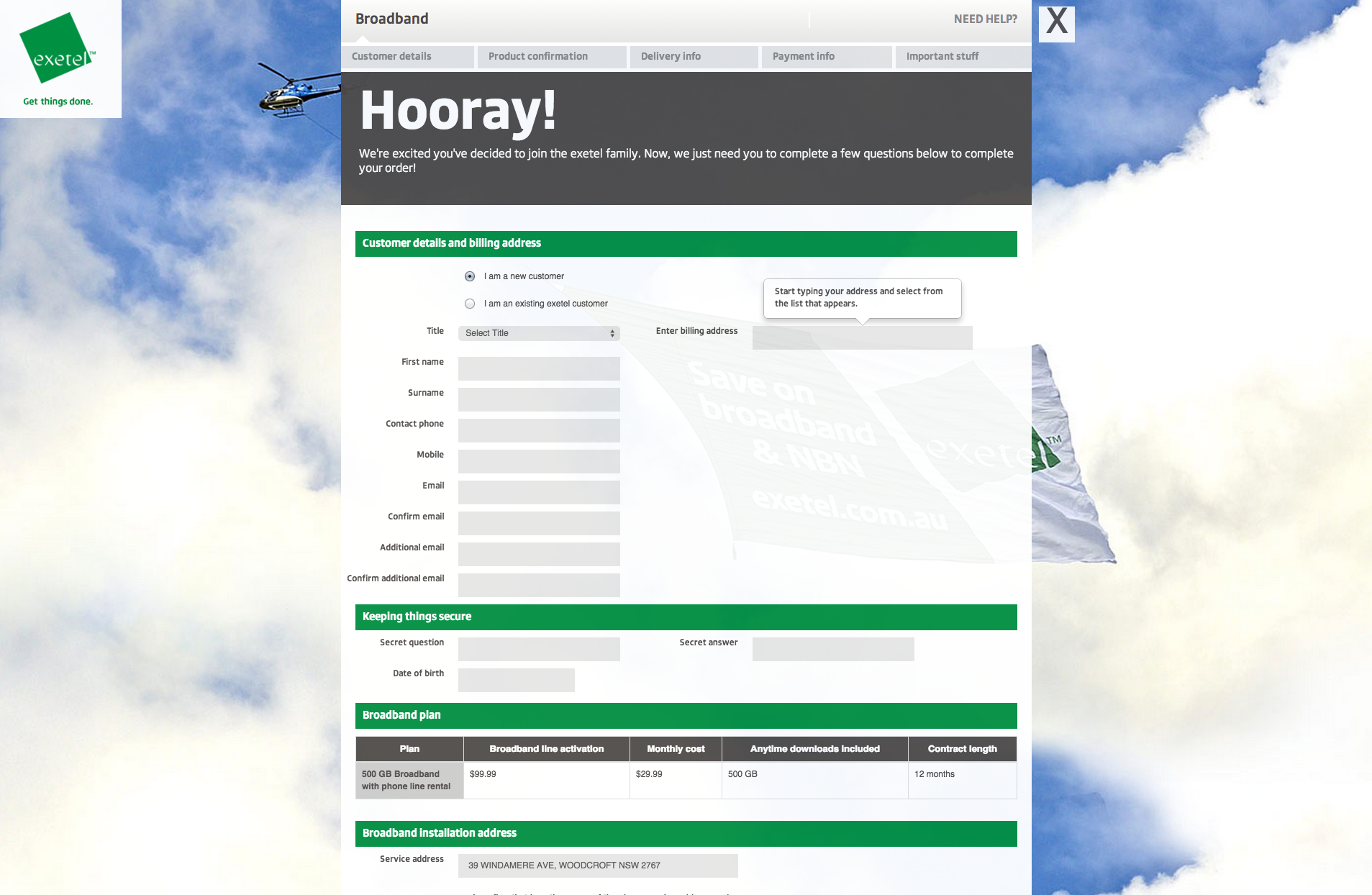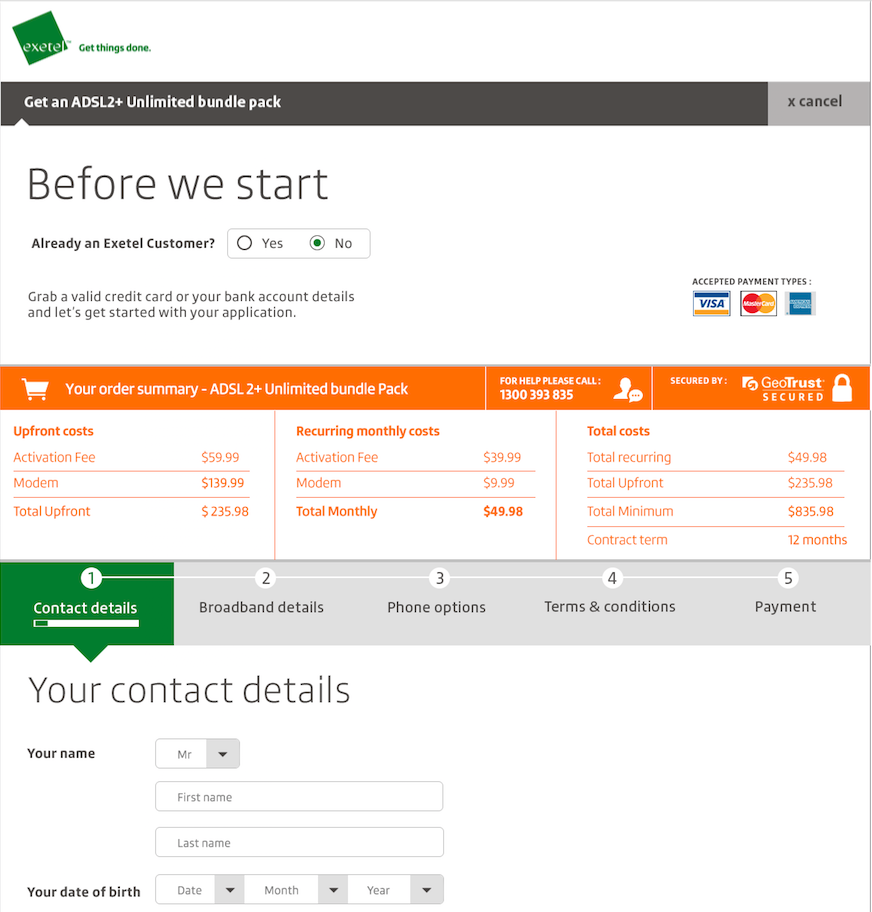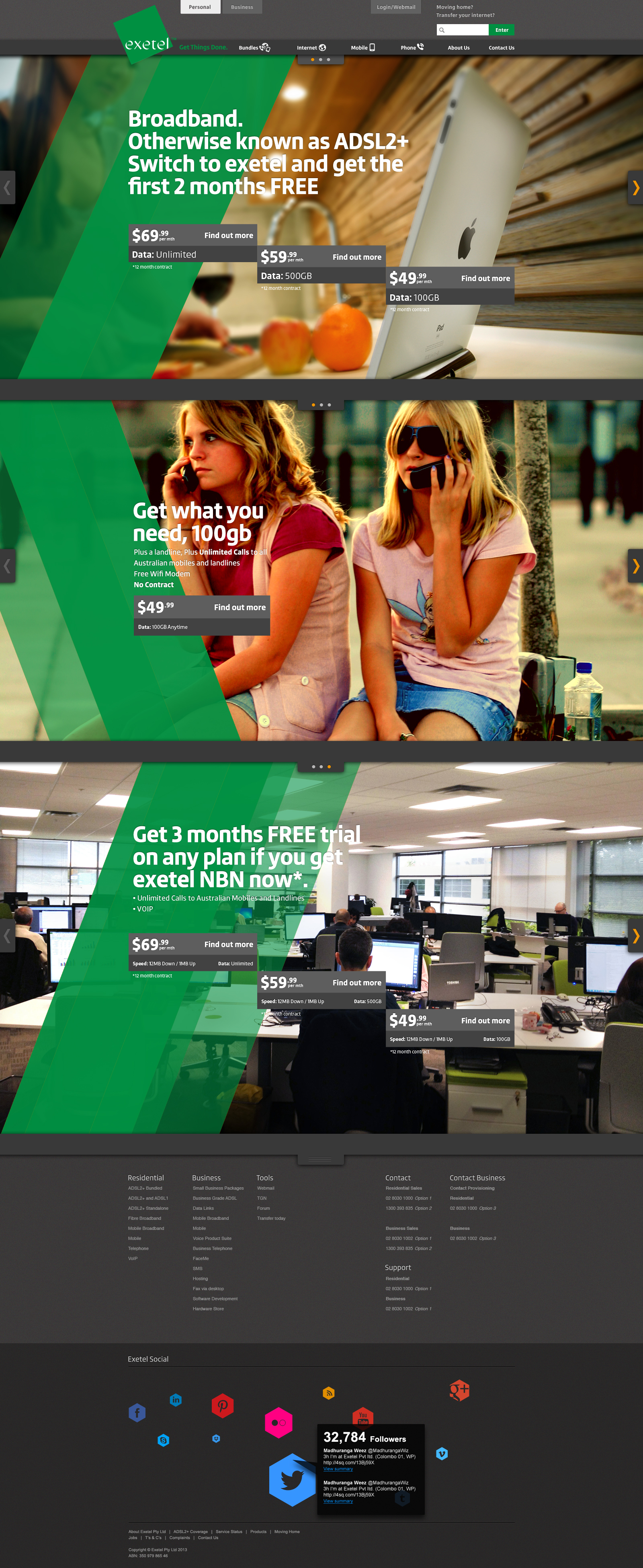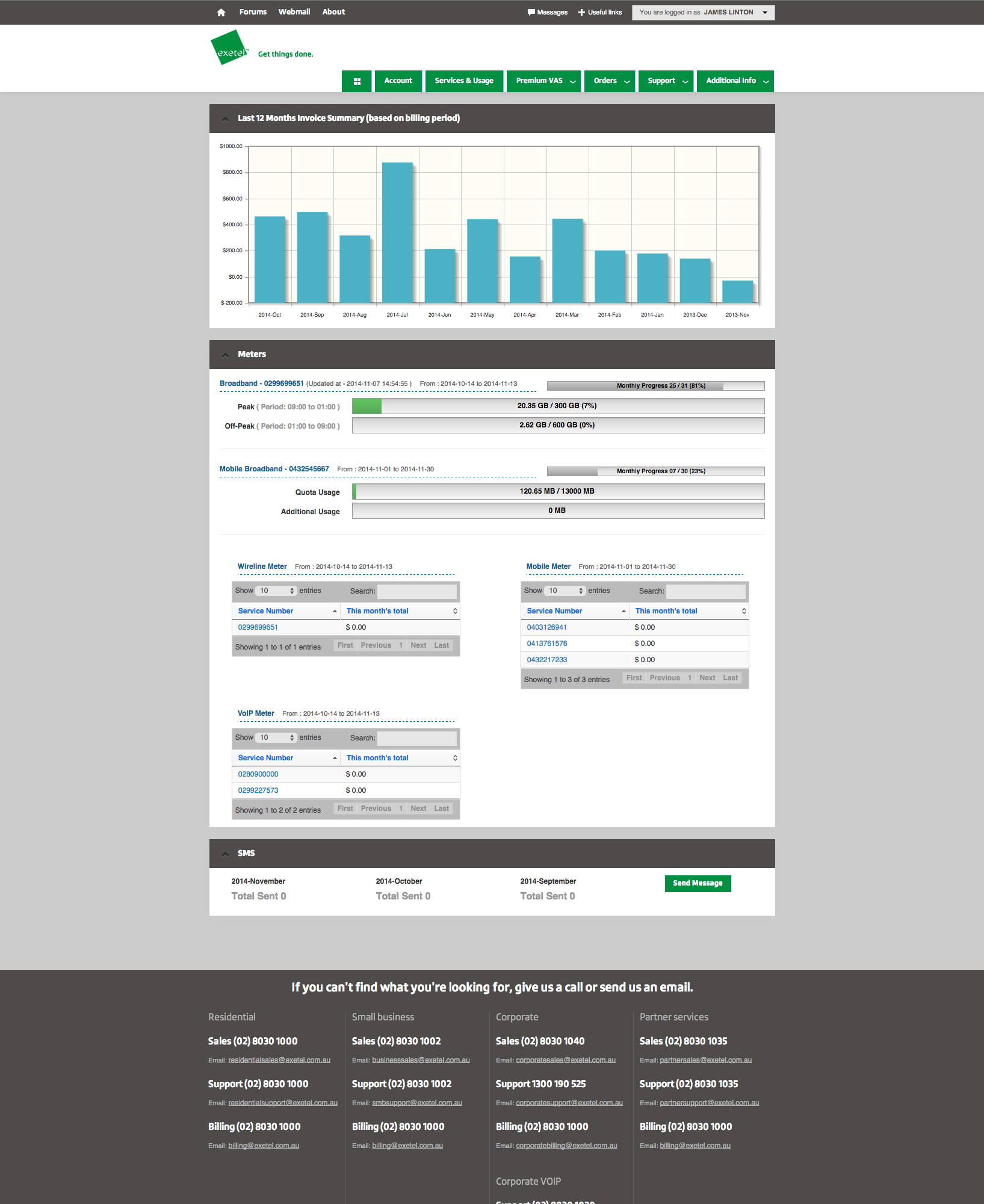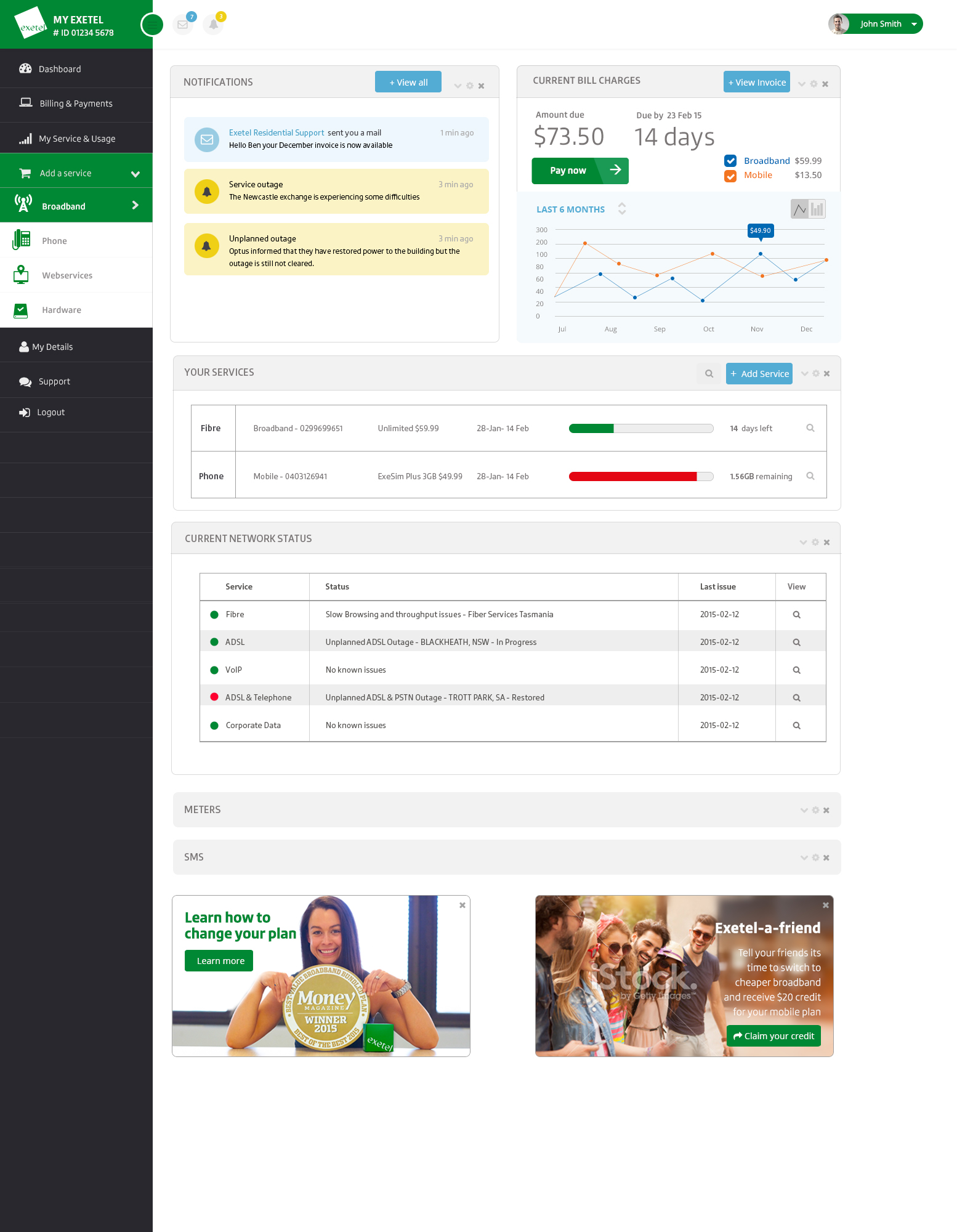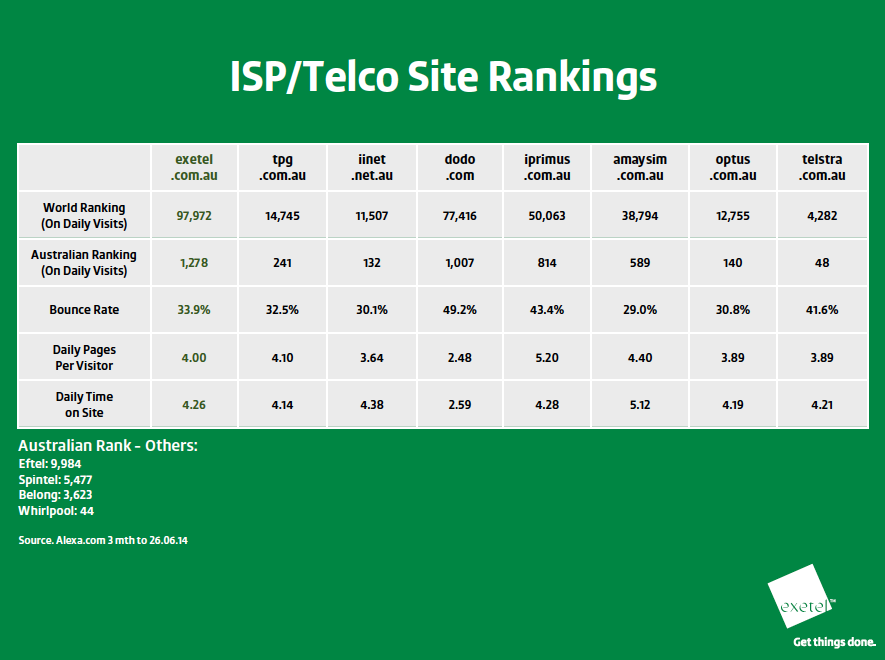A rebrand with a startup mindset
Exetel began its corporate existence as a technology consulting company in the early 1990s and continued to provide a wide range of technical and management consulting services until December 2003 when it decided to become a service provider of data and telephone communications services. Now in it’s 10th year in 2013, Exetel knew it needed to innovate and re-brand. With the Australian telecommunications market competitive and ubiquitous consumer and commercial products and services, the need to stand apart with a unique voice was paramount.



